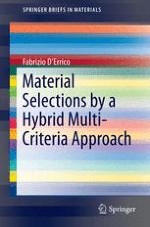
2015 | OriginalPaper | Buchkapitel
1. The Material Selection Strategy
verfasst von : Fabrizio D’Errico
Erschienen in: Material Selections by a Hybrid Multi-Criteria Approach
Aktivieren Sie unsere intelligente Suche, um passende Fachinhalte oder Patente zu finden.
Wählen Sie Textabschnitte aus um mit Künstlicher Intelligenz passenden Patente zu finden. powered by
Markieren Sie Textabschnitte, um KI-gestützt weitere passende Inhalte zu finden. powered by